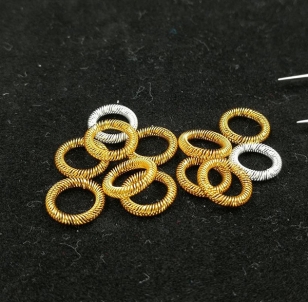1. Yield strength The yield strength of materials has a certain relationship with exhaustion. In general, the higher the yield strength of the material, the higher the exhaustion intensity. Therefore, in order to improve the fatigue strength of the finger spring, please increase the yield strength of the finger spring material as much as possible. Materials with high strength or yield strength to tensile strength. For the same material, fine-grained structures have higher yield strength than coarse-grained structures.

2. The stress of the surface state mainly occurs on the surface of the spring material, so the surface quality of the spring has a great influence on the fatigue strength. Cracks, defects, and scratches in the spring material during rolling, drawing, and rolling are often the cause of tired spring breakage. The smaller the surface roughness of the material, the smaller the stress collection and the higher the fatigue intensity. The effect of material surface roughness on exhaustion. As the surface roughness increases, exhaustion decreases. When the roughness is combined, different steel grades and rolling methods will also reduce fatigue to varying degrees. For example, the reduction of a cold coil spring is smaller than that of a hot coil spring. Because steel coil springs and their heat treatment are heated, the surface of the spring material becomes rough and decarburized due to oxidation, which then reduces the fatigue strength of the spring. Grind, pressed, sandblasted and rolled material surfaces. Both increase the fatigue strength of the spring. Finger springs
3. The larger the size of the size effect material, the greater the possibility of shortcomings in various hot and cold processing processes, and the greater the possibility of surface shortcomings, which then leads to a decrease in exhaustion performance. Therefore, when calculating the strength of spring exhaustion, the influence of size effects should be taken into account.
4. Metallurgical shortcomings refer to non-metallic inclusions, bubbles, element segregation, etc. in materials. Inclusions on the surface are a source of stress aggregation and can lead to premature exhaustion cracks at the interface between the inclusion and the matrix. Measures such as vacuum melting and vacuum casting can greatly improve the quality of steel.













